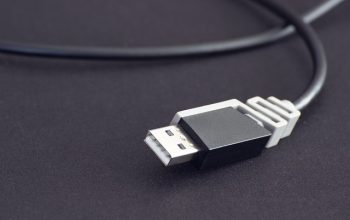When navigating the vehicle title transfer process, it’s crucial to have a clear understanding of the DMV title transfer requirements and steps involved. Whether you’re buying or selling a vehicle, ensuring a smooth transition is key. This article demystifies the DMV title transfer basics, guiding you through the necessary forms, fees, and documentation. From in-state to out-of-state transfers, follow our detailed checklist to avoid delays and ensure your title transfer after car purchase goes without a hitch. With insights on how to transfer a car title and tips for handling used car transactions, you’ll be equipped to manage the process with confidence.
- Understanding the Basics of DMV Title Transfer
- Key Documents for a Seamless Title Transfer
- Completing DMV Title Transfer Forms Correctly
- Title Transfer Fees and Costs Breakdown
- Steps to Transfer a Car Title In-State
- Navigating Out-of-State Title Transfers
- Tips for a Smooth Title Transfer Process After Purchasing a Used Car
Understanding the Basics of DMV Title Transfer

When acquiring a new or used vehicle, understanding the vehicle title transfer process is crucial for a seamless transition of ownership. The DMV title transfer requirements vary by state but generally include completing the appropriate forms, such as an Application for Title and/or Registration (often Form TR-1 with the California Department of Motor Vehicles, for example). These forms must be filled out accurately to reflect both the seller’s and buyer’s information. Additionally, you will need to present the current title to the vehicle, if available, along with proof of insurance, a valid driver’s license, and possibly additional identification. Title transfer fees and costs, which are typically due at the time of transaction, vary by state as well but are necessary for processing the change in ownership. These can include titling fees, registration fees, and any applicable sales tax or use tax. Failing to comply with these DMV title transfer requirements can lead to delays and potential legal issues post-purchase. To avoid such complications, it’s advisable to consult your local DMV’s guidelines or a comprehensive DMV title transfer checklist tailored to your state’s regulations. Whether you’re transferring a car title in-state or from another state, adhering to the established procedures and preparing all required documents will facilitate a smooth and compliant vehicle title transfer process.
Key Documents for a Seamless Title Transfer

When navigating the vehicle title transfer process, having all the necessary documents ready is crucial to ensure a smooth transition. The first step in the DMV title transfer requirements involves gathering key documents. These typically include the signed over title from the previous owner, a completed application for title and registration (often formulated as an MVD-1 or similar by your state’s Department of Motor Vehicles), proof of vehicle sale, and your valid driver’s license or identification card. Additionally, you may need to provide proof of insurance, vehicle inspection certificates if applicable, and payment for title transfer fees and costs. It’s important to verify these requirements with your local DMV as they can vary by state. For those who have recently purchased a used car, understanding how to transfer a car title is particularly important to avoid any legal complications or delays. The process ensures that the legal ownership of the vehicle is transferred from the seller to the buyer, and it’s imperative to complete this within the stipulated timeframe to avoid any penalties or issues with the vehicle’s registration. Ensuring all forms are correctly filled out, fees are paid promptly, and all supporting documents are in order will facilitate a seamless title transfer after car purchase, whether you’re conducting an in-state or out-of-state transaction. Remember to keep abreast of any recent changes in the DMV title transfer process by consulting official state resources or contacting your local DMV office directly.
Completing DMV Title Transfer Forms Correctly

When engaging in the vehicle title transfer process, one of the most critical steps is completing the necessary DMV title transfer forms accurately. The form required for this purpose varies by state; for instance, a commonly used form is the “Application for Title and/or Registration” (Form TR-1A or similar). It’s imperative to fill out these forms with precision, as errors can lead to processing delays or even rejections. Ensure that all personal information, including your name, address, and vehicle details such as the VIN (Vehicle Identification Number), are correctly entered. Additionally, the form must reflect whether the title transfer is due to a purchase, sale, or an inheritance. Title transfer fees and costs associated with this process differ by state as well; they may be payable online, by mail, or in person at the DMV office. Knowing the exact amount beforehand can help you prepare financially for the transaction. Understanding the DMV title transfer requirements and associated fees is crucial for a seamless transfer of ownership. This includes having the proper documentation, such as proof of insurance, odometer disclosure if applicable, and any lienholder information. By adhering to these guidelines and being well-prepared with the necessary paperwork and understanding of the DMV title transfer requirements, you can ensure a smooth transition of vehicle ownership whether it’s within the same state or across borders. Remember to keep abreast of the specific forms and fees for your particular state, as these can change and may affect your title transfer after a car purchase.
Title Transfer Fees and Costs Breakdown

When navigating the vehicle title transfer process, understanding the associated fees and costs is crucial for a seamless transaction. Title transfer fees and costs can vary depending on the state in which the transfer is taking place, as each jurisdiction sets its own regulations and charges. Typically, these fees are non-negotiable and must be paid to the DMV during the title transfer process. They often include a filing fee for processing the transfer request, a titling fee to issue the new title, and registration fees if the vehicle registration is also being updated. It’s important to verify the exact title transfer fees and costs with your local DMV office or online resource beforehand, as these can differ significantly from one state to another. Additionally, some states may charge extra for expedited services if you require a faster turnaround time. To ensure that you are fully prepared financially, consult the specific DMV title transfer requirements for your state and include all necessary fees in your budget. Whether you’re transferring a title in-state or from out of state, being aware of these costs in advance will help facilitate the how to transfer a car title process after a car purchase without any unnecessary delays. Always check the most current fee schedule provided by your DMV, as these can change over time.
Steps to Transfer a Car Title In-State

When transferring a car title in-state, it is crucial to adhere to the vehicle title transfer process set forth by your state’s Department of Motor Vehicles (DMV). The process begins with gathering necessary documentation, which typically includes the current title to the vehicle, proof of insurance, a completed application for title and registration, and an odometer disclosure statement if the vehicle is under ten years old. Ensure that all owners listed on the title are present to sign it over to you or that their signed signatures are notarized if they cannot be present. Once these DMV title transfer requirements are met, you must submit them along with the applicable title transfer fees and costs, which vary by state. These fees usually encompass a titling fee and registration fee, and sometimes additional taxes based on the vehicle’s value. After submitting your application and payment, processing times may differ, but most states offer an expedited service for an additional fee if you need the title transferred promptly. To avoid any delays, double-check that all forms are correctly filled out and that all required documents are included in your submission to the DMV. Following these steps diligently will facilitate a smooth transfer of the car title, whether you’re transferring it due to a purchase, an inheritance, or as part of a gift within the state. Remember to keep abreast of any specific instructions or changes in procedures from your local DMV office to ensure compliance with current regulations and for a hassle-free vehicle title transfer process.
Navigating Out-of-State Title Transfers

When transferring a vehicle title from one state to another, it’s crucial to familiarize oneself with the specific DMV title transfer requirements that differ from in-state transactions. The process typically involves submitting the necessary forms, which vary by state but often include a Bill of Sale and an Application for Title and Registration. Additionally, you must provide proof of your social security number, vehicle identification number (VIN), and current odometer reading. Each state sets its own title transfer fees and costs, so it’s important to check with the DMV in both the selling and buying states to understand these expenses fully. The fee structure can encompass a range of charges such as titling, registration, and possibly sales tax on the vehicle’s value. To ensure a smooth transition, gather all relevant documents and information beforehand. This may include the current title, proof of insurance, smog certification (if required), and any lienholder information. By carefully preparing for an out-of-state title transfer, you can minimize delays and expedite the process, allowing you to legally operate your vehicle in your new state promptly after the car purchase. Remember to adhere to each state’s timelines and follow their procedures precisely; failure to do so could result in penalties or a lapse in registration, which could lead to fines or other legal implications.
Tips for a Smooth Title Transfer Process After Purchasing a Used Car

When transferring a vehicle title for a used car, it’s crucial to be well-prepared to ensure the process is as efficient as possible. Begin by gathering all necessary documents beforehand; these typically include the signed over title from the seller, a valid photo ID, proof of insurance, and completion of the DMV title transfer forms specific to your state. Ensure that the buyer’s and seller’s information on these forms is accurate to avoid any delays or complications. The vehicle title transfer process varies by state, but generally involves submitting these forms along with the appropriate title transfer fees and costs to the DMV. These fees can differ based on the type of vehicle and whether it’s an in-state or out-of-state transfer. To transfer a car title, you may also need to pass an emissions inspection or provide a bill of sale as proof of the transaction. Keep in mind that timing is key; most states have specific deadlines for submitting the paperwork after the car purchase to avoid any lapse in registration. By understanding the DMV title transfer requirements and having all documentation and fees ready, you can facilitate a swift and seamless transfer of the vehicle title, ensuring that you’re driving legally and without interruption. For those who prefer guidance or wish to avoid potential errors, consider utilizing online resources or visiting your local DMV office for assistance with the title transfer after car purchase process.
Navigating the DMV title transfer process is a fundamental step for vehicle owners engaged in buying or selling a car. This article has outlined the crucial aspects of this transaction, including the essential documents, forms, and fees involved. Whether you’re handling an in-state or out-of-state transfer, adhering to the DMV title transfer requirements and utilizing a checklist can significantly streamline the process. Remember to attend to the title transfer fees and costs associated with this change of ownership to ensure all legalities are fulfilled. By following the detailed steps provided and employing our suggested tips for used car transactions, you can confidently transfer your vehicle title without delay or complications. For a comprehensive understanding of the DMV title transfer process, refer back to this guide, your reliable resource for vehicle title transfer basics.



